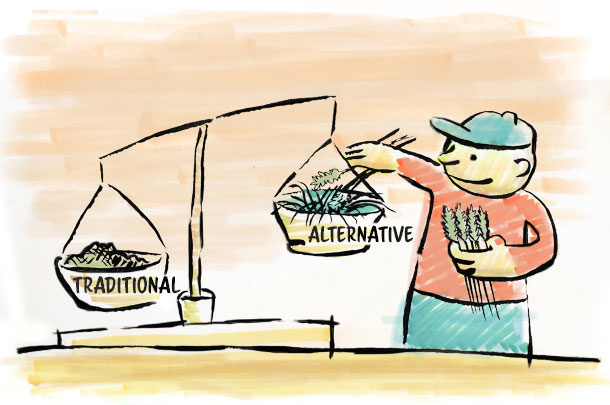To read this article in French, click here.
Issues like repeated winterkill, delayed or prevented planting and harvest, as well as uncertainty in corn and soybean markets, decline in fluid milk prices and a global pandemic have made planning for the future exceedingly difficult. To offer advice and motivation to persevere through these less-than-ideal circumstances, Dr. John Goeser presented “Connecting forage quality dots to performance” as part of the Growing & Feeding Alternative Forages webinar series held by the University of Wisconsin – Madison Extension in April.
Adapting to changing environmental conditions
Forage inventories have become increasingly deficient. Goeser explained this is due in part to changing and poor weather conditions in recent years. He noted, “We are into forage shortages because we have had anything but normal.” As an example, Goeser looked at weather patterns in the Midwest and concluded that the past few years have received more rain on average. To combat this, new management techniques should be considered, along with alternative forages. “Beyond just thinking about emergency forages, perhaps we should be thinking about alternative forages and different ways of farming, if for whatever reason, this is our new normal,” Goeser argued.
Alternative forages
Goeser provided several examples of alternative forages that could be beneficial and offer more reliability than emergency forages alone. Here are some of the alternative forage crops Goeser suggested for the U.S.:
- Corn as a cover crop
- Cool season grasses
- Oats
- Peas
- Sorghum and sudangrass for warmer regions
- Teff grass
- Grass and clover blends for warm and cool seasons
When evaluating the potential of some of these alternative forages, Goeser recommended looking at forage yield and comparing it to the total amount of digestible dry matter (DM) present, or with cost per ton of digestible DM. Additionally, the given forage growing environment is a large factor to consider, as it will influence alternative forage decisions.
Goeser noted it is important to remember that, “Cows have nutrient requirements, not forage requirements.” He explained, a cow on a diet composed of 25% to 35% forage will still be healthy.
Forage quality
Goeser said the goal for producers should be to produce high-quality forage and aim for a strong DM yield. Producing for fiber digestibility is a good strategy, as every pound of digestible starch and fiber will “unlock” enough energy to produce 3.5 pounds of milk. Goeser noted, “Today’s cows may respond to an even greater extent to forage quality.” Growing for forage quality will help increase the profitability of feed. Looking at one study, Goeser explained that a 10% increase in quality could yield an extra 30 cents in feed-margin potential per hundredweight. Increasing quality in forages can also lower feed costs, as cows will eat less yet produce the same quantity of milk.
Other considerations
Besides growing alternative forages and focusing on fiber and overall forage quality, steps can be taken to mitigate risks associated with changing economic and environmental conditions. Goeser presented strategies on stretching inventories, troubleshooting total mixed ration (TMR) analysis and feed efficiency. More than once during his presentation, Goeser stressed the need to focus on consistent forage inventories and planning to avoid any large excesses or deficiencies in inventories. To make inventories last, he suggested balancing cows’ diets with alternatives to forage and keeping forage quantities lower. A lower-cost feed like soyhulls could also be useful. If there are concerns over problems with TMR, the nutrition profile of feed should be checked and feed efficiency factors, such as starch digestibility on high moisture corn harvested during cold conditions, should be considered.
Feed efficiency may be hindered by less-obvious factors, like meeting the energy demands of clinically sick cows. Sick cows have energy needs of about 4.4 pounds of glucose per cow, which is equivalent to 7 pounds of corn grain. Poor feed cleanliness can also affect feed efficiency. Troubleshooting techniques and alternative forages can work together to provide greater certainty, as factors of which producers have little control, continue to evolve.











